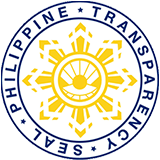With many Filipino commuters returning to the road after the transition to GCQ in Metro Manila, there is a need to balance safety against COVID-19 and available public transportation. In celebration of World Bicycle Day last June 3, the Department of Health (DOH), together with officials of the Department of Transportation (DOTr) and cycling advocates discussed how cycling may be an alternative mode of transportation during the quarantine.
In the June 3 Beat COVID-19 Virtual Presser , Health Undersecretary Dr. Maria Rosario Singh-Vergeire talked with representatives from the DOTr and local cycling groups about how the use of a bicycle can be both an alternative transportation solution and a health solution.
DOTr Assistant Secretary Goddess Hope Libiran explained that a joint administrative order is being reviewed by the DOTr, DILG, DPWH and DOH to identify guidelines for the use and promotion of active transport both during and after the pandemic.
“Hindi lamang alternatibong paraan ng transportasyon ang bisikleta, ang palagiang pagbibisekleta ay ehersisyo din na makakatulong upang tumaas ang ating immune system, na lalo tayong inihahanda sa paglaban sa COVID-19 virus,” said Singh-Vergeire.
Dr. Antonio Dans, an avid cycler and doctor at the Philippine General Hospital, explained that the exercise from riding a bicycle would not only boost the body’s immune system to better fight communicable diseases such as COVID-19, but would also improve overall health and prevent complications caused by hypertension, diabetes, and cardiovascular illnesses.
Dans also detailed how several hospital bike loops can be formed for healthcare workers during the community quarantine. A hospital bike loop is a group of connected roads and streets that link multiple nearby hospitals. According to Dans, these loops should be secured so healthcare workers are protected as they cycle to work.
These hospital bike loops are part of a joint initiative with Life Cycles PH headed by founder Keisha Mayuga. Since the beginning of the ECQ, over 1000 bicycles have been provided by the group to mostly health workers.
Mayuga emphasized that for these loops to work, additional safety interventions, which include barriers and better signage, should be placed to ensure the protection of cyclists and motorized vehicles alike along the bustling streets of the metro.
“Hindi lamang sa pag-maintain ng physical distancing, but at the same time this will deliver substantial environmental and health benefits and achieve efficient use of road space. DOTr is very committed to support initiatives to develop more facilities to make biking safer,” said Libiran.
According to the Health Spokesperson, “Marahil po ay marami ngayon ang nahihirapan kung paano sila papasok sa kani-kanilang mga trabaho, at kung papaano sila makakauwi ngayong hindi pa pinapayagan ang mga public transport katulad ng mga jeep at bus”.
“Ang panawagan po namin, kaisa ang buong sambayanan, ay sana gawing ligtas ang daan para sa mga gumagamit ng bisikleta at sana wag din naman masyadong itaas ang presyo ng bisikleta. Wag po natin samantalahin ang pagkakataong ito. Wag po tayo maging pahirap sa ating kapwa Pilipino.”
The health official stressed the importance of unity at this time while everyone is continuing to adjust to the constantly changing circumstances due to this pandemic.
“Sa lahat po ng mga motorista, kasama na po ang mga pedestrian, humihingi po kami ng dagdag na pasensiya at tayo pong lahat ay magkaisa laban sa pandemyang ito. Ang COVID-19 ay ang kalaban natin sa ngayon at kailangan po nating pagtuunan ng pansin kung paano natin mapapanatiling ligtas ang lahat sa COVID-19,” Singh-Vergeire concluded.
Related Press Releases


